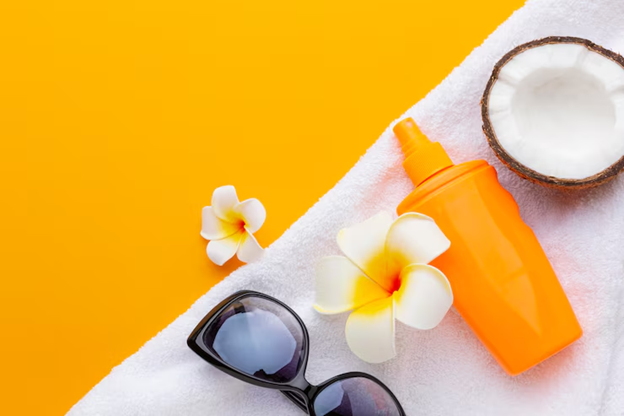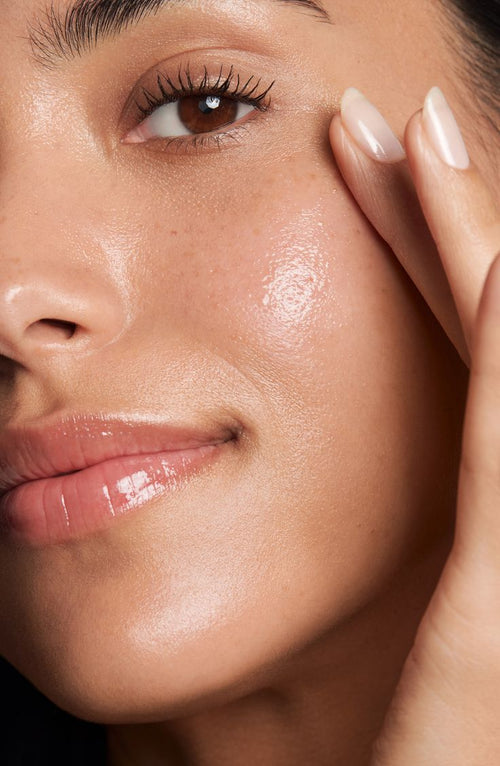
How to Read Skincare Labels (Without a Chemistry Degree)
Share
People often assume that skincare labels are like a science test. They get baffled by the long, hard-to-pronounce names. And their tiny print makes it even harder to understand. Marketing buzzwords are everywhere - to divert your attention from what you should actually know.
But knowing how to read labels helps you pick safe, effective products. You don’t need to be a chemist: all that you need is a little guidance. This guide breaks it all down in simple terms.
Why Does Reading Skincare Labels Matter?
Understanding skincare labels helps you:
● Avoid ingredients that irritate your skin
● Spot harmful or toxic chemicals
● Choose products that truly match your skin type
● Avoid being fooled by “natural” or “clean” claims
● Make smarter, safer purchases
Once you know what to look for, shopping for skincare gets a lot easier.
The Basics of a Skincare Label
Every skincare product has several key sections on the label:
● Brand and product name
● Claims (like “hydrating” or “for sensitive skin”)
● Directions for use
● Ingredients list (INCI format)
● Warnings and shelf life
● Manufacturer and contact info
Let’s focus on the ingredients list, because that’s where the real story lives.
The Ingredients List: What You Need to Know
Skincare ingredients are listed using INCI names, that is, the short form for International Nomenclature of Cosmetic Ingredients. These names can sound scientific, but many are just fancy terms for simple things.
Important rules:
● Ingredients are listed from highest to lowest concentration
● Ingredients under 1% can be listed in any order
● Active ingredients (like sunscreen filters or acne treatments) are often listed at the top or separately
Example:
Water, Glycerin, Caprylic/Capric Triglyceride, Niacinamide, Phenoxyethanol, Fragrance
This tells you:
● Water is the main ingredient
● Glycerin (a humectant) comes next
● Niacinamide is in there, but likely not the highest concentration
Common Ingredient Categories (in plain terms)
Here’s a cheat sheet to help you recognize what an ingredient does.
Humectants (draw moisture into skin)
● Glycerin
● Hyaluronic Acid
● Aloe Vera
● Propanediol
Emollients (soften skin)
● Squalane
● Jojoba Oil
● Shea Butter
● Caprylic/Capric Triglyceride
Occlusives (seal in moisture)
● Petrolatum
● Beeswax
● Lanolin
● Dimethicone
Actives (treat skin concerns)
● Retinol (anti-aging)
● Niacinamide (brightening, oil control)
● Salicylic Acid (acne)
● Glycolic Acid (exfoliating)
Preservatives (prevent bacteria and mold)
● Phenoxyethanol
● Ethylhexylglycerin
● Potassium Sorbate
● Sodium Benzoate
Fragrance / Parfum
● Often listed last
● Can cause irritation or allergy
● “Fragrance-free” ≠ unscented (it may still have masking agents)
Watch Out for These Ingredients
These ingredients may cause issues, especially for sensitive skin:
● Fragrance / Parfum – the top cause of allergic reactions
● Alcohol Denat (denatured alcohol) – can dry out skin
● Sodium Lauryl Sulfate (SLS) – harsh cleansing agent
● Essential oils – natural but often irritating (like citrus or peppermint)
● Formaldehyde releasers (DMDM Hydantoin, Imidazolidinyl Urea) – used as preservatives
Experts recommend conducting a patch test if you're unsure, as just because it's "natural" doesn't mean it's safe for everyone.
How to Decode Marketing Words
Skincare companies love buzzwords, yet they don’t always mean what you think.
“Natural”
● Not regulated
● Can include synthetic ingredients
● Always check the label
“Organic”
● Only meaningful if certified (look for USDA or ECOCERT logos)
● Some ingredients can be organic, while others are not
“Hypoallergenic”
● No legal standard
● Doesn’t guarantee it won’t cause a reaction
“Non-comedogenic”
● Supposed not to clog pores
● But there’s no strict test for this
“Fragrance-free” vs “Unscented”
● Fragrance-free = no added fragrance
● Unscented = may still include masking fragrance
Don’t trust the front of the bottle, you should always flip it and read the ingredients.
Tips for Spotting Good Products
When reading a skincare label:
● Look for fewer ingredients (simpler is better)
● Avoid long lists full of hard-to-pronounce chemicals
● Prioritize active ingredients in the top half of the list
● Choose known, skin-safe ingredients (like niacinamide, glycerin, squalane)
● Avoid heavy fragrance if you have sensitive or acne-prone skin
What About Ingredient Safety?
Want to check if an ingredient is safe?
Use these tools:
● INCI Decoder – breaks down ingredient lists
● EWG Skin Deep – rates ingredients by safety
● Think Dirty App – scans products and shows toxicity ratings
These aren’t perfect, but they’re a good starting point. Always use common sense and patch test new products.
Ingredient Red Flags by Skin Type
For Sensitive Skin
● Avoid: fragrance, essential oils, alcohol
● Look for: ceramides, oat extract, aloe, chamomile
For Oily/Acne-Prone Skin
● Avoid: heavy oils (coconut oil, cocoa butter), isopropyl myristate
● Look for: niacinamide, salicylic acid, green tea extract
For Dry Skin
● Avoid: drying alcohols
● Look for: hyaluronic acid, glycerin, shea butter, squalane
For Aging Skin
● Avoid: irritating actives used too often (like strong retinoids)
● Look for: peptides, vitamin C, bakuchiol, ceramides
What Order Should Ingredients Appear?
As a rule:
● The first 5 ingredients make up 80–90% of the product
● If an active is in the bottom half, it's likely in small amounts
● Some actives are potent in low amounts, like retinol
● Others (like aloe or vitamin C) need a higher dose to work
Don’t be fooled by label claims (“with vitamin C”) if it’s the last item on the list.
How to Spot Greenwashing
Greenwashing = when a brand markets a product as “natural” or “eco-friendly” but uses harmful or misleading ingredients.
Signs of greenwashing:
● Uses words like “clean,” “pure,” or “chemical-free” with no proof
● Has a long ingredient list full of synthetic fillers
● Doesn’t show full ingredient transparency
● Uses fake “badges” or logos not backed by a real certification
Tip: Look for third-party seals like:
● USDA Organic
● COSMOS Organic
● ECOCERT
● Leaping Bunny (cruelty-free)
Wrap Up!
Reading skincare labels doesn’t need to be scary. You don’t need to memorize every ingredient. Just look for a few key signs:
● Simple ingredient lists
● Proven activities near the top
● Safe ingredients for your skin type
● Honest, transparent brands
This is your sign to flip the bottle and ignore the hype. It's your skin, so you should be concerned about it - your skin will thank you.

